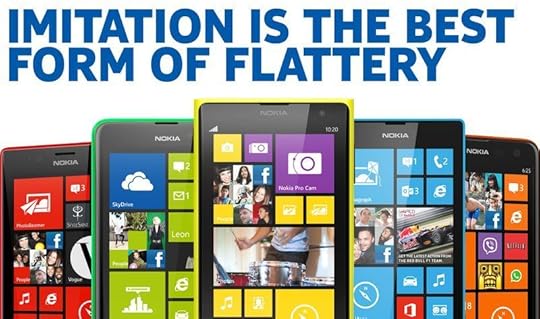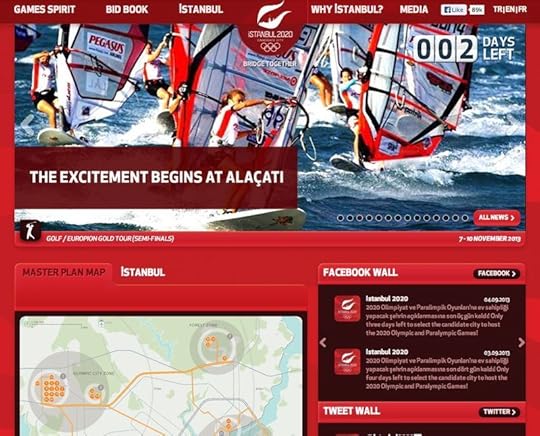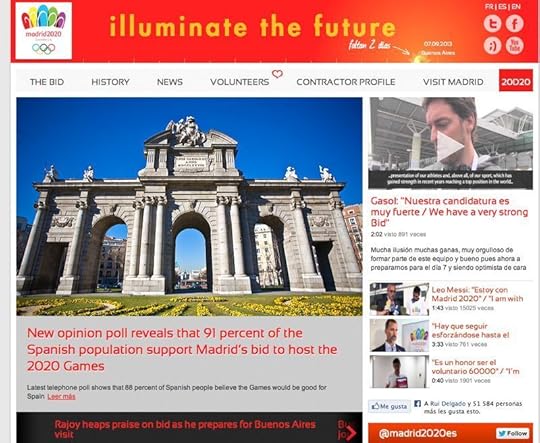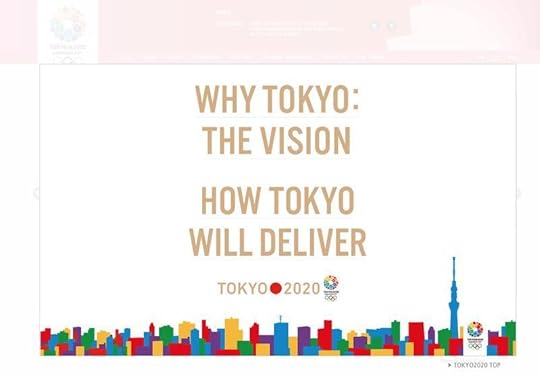David Meerman Scott's Blog, page 71
October 7, 2013
Who is selling whom?
 In the many hundreds of live music venues I’ve visited, getting a drink is the worst experience.
In the many hundreds of live music venues I’ve visited, getting a drink is the worst experience.
It’s loud making it tough to communicate. It’s dark. But the biggest problem is that there never seems to be enough bar staff. That means that thirsty patrons must jockey for position and try to make eye contact with bartenders. Some people wave tens or twenties in their hand. Some make their way to one end of the bar or the other, hoping that when the staffer moves, they will see.
It is one of the few places where the buyer-seller relationship is reversed. In a crowded bar, the buyer needs to work the angles to spend money.
Losing money
Of course, understaffed bars mean that people don’t order as many rounds as they might if there was no hassle.
If I’m enjoying the show, I might take a few minutes to grab a drink. But not if it looks like I’ll be there for more than 5 minutes waiting. Multiplied by lots of people, that could be thousands of dollars lost per night in a crowded venue where people forgo drinks.
A better way
 Last night I hit some of the live music spots in Nashville with my friend, HubSpot CEO Brian Halligan.
Last night I hit some of the live music spots in Nashville with my friend, HubSpot CEO Brian Halligan.
At Tootsies World Famous Orchid Lounge we were surprised to see the bartenders raising their hands and making eye contact with customers. Wow. What a difference!
Check out the bartender in Green on the right in this shot. (click to enlarge the photo).
Bartenders at a crowded music venue looking for me rather then the other way around!
It was a fun evening. (But I needed aspirin this morning because of the ease of drinking.)
In your market, who is selling whom?
October 2, 2013
Marina quits her job via YouTube video
Eight and a half million views and counting in a bit over four days.
That’s how many people have watched Marina V. Shifrin’s An Interpretive Dance For My Boss Set To Kanye West's Gone, a video where she quits her job at a Taiwanese animation company.
Marina says: "I work for an awesome company that makes news videos. I have put my entire life into this job, but my boss only cares about quantity, how fast we write and how many views each video gets.
I believe it's more important to focus on the quality of the content. When you learn to improve this, the views will come. Here is a little video I made explaining my feelings."
Sure it is a risk to quit in this public way. The danger that it will backfire are enormous. Many potential future employers will think: “What will she do when she doesn’t want to work here anymore.”
However, Marina’s skills at generating attention will certainly be in demand by another organization. In her case the gamble works because the video is highly entertaining. And she has a personal site where potential employers can learn more about Marina V. Shifrin.
Thanks to Mark Amtower for pointing us to this awesome video.
+++++++++++++++++++
UPDATE: I missed it as I wrote this post, but two days after Marina's video, her employer posted a very clever video response: An Interpretive Dance From Next Media Animation Set To Kanye West's Gone. Thanks to J Craig Waller and Raul Colon for pointing us to the response.
October 1, 2013
The best in the industry
 Many marketers use the phrase “The best in the industry” to talk about their company, products, and services.
Many marketers use the phrase “The best in the industry” to talk about their company, products, and services.
Besides being overused and cliché, there are a number of problems with "the best in the industry".
The phrase forces people to consider what exactly is “the industry”?
"Oh, it looks like they are the best in the home electronics and appliance repair industry. But I need my camera fixed so I should probably go somewhere else.”
The phrase forces a comparison that people weren’t necessarily doing. You instantly divert people’s attention to the competition and what they might have to offer.
“So you’re the best in the e-cigarette cartridge industry? That probably means there is a cheaper alternative.”
Rather than focusing on the competition, your marketing should focus on your buyers.
September 26, 2013
Stupid surveys are all take and no give
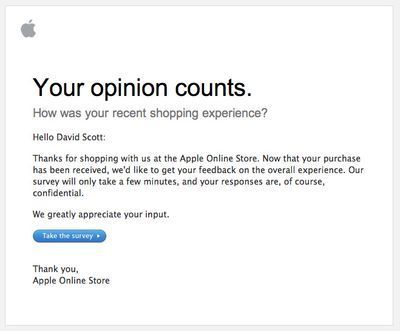 I’ve been getting a bunch of surveys recently, more than usual for some reason.
I’ve been getting a bunch of surveys recently, more than usual for some reason.
It seems like each time I contact a company or buy something where I’ve given my email address they want me to take “less than 10 minutes” to complete a survey.
In the past few weeks, I’ve been interrupted by big brands that should know better like Skype, Apple, Nike, and AT&T.
Sometimes, they send multiple emails, as if I forgot the first time, even using ALL CAPs such as this one:
REMINDER: AT&T Wants To Know About Your Recent Experiences with AT&T
Dear Valued AT&T Customer,
At AT&T, we value your opinion. We strive to give you the best service possible and that can't happen without your honest feedback. Every voice matters – especially yours! By taking less than 10 minutes to complete a brief online survey, you have the opportunity to make your voice heard.We are specifically interested in talking to you about your recent experiences with AT&T.
Just click below and help us improve in order to serve you better!
How do the marketers let this happen? It is crazy for a company to take from people at a critical moment – when they have just sat on a customer support call or when they have just purchased a product.
Rather than taking, companies should be giving. Specifically, they should be delivering valuable content.
We value your opinion
What a stupid statement. It’s not “we value your opinion” but rather “we want to take some of your time”.
It seems to me the problem with these surveys is the survey people (those in customer support who are measured on the satisfaction of people on a transactional basis for each telephone support call or product purchase) aren’t at all connected to the marketers who are responsible for educating consumers.
And the senior executives are so focused on spreadsheets that they can't even comprehend that the process of gathering that customer service data is actually hurting the company.
Focused on the leaves on the trees
The executives in these companies pour over tiny incremental changes in customer satisfaction numbers. “Oh, look! We’re up one percent this month!”
They must know that the metrics are based on people who have nothing better to do but fill out stupid surveys. Don’t they realize this obsession on the leaves on the trees means they miss the trees, let alone the forest?
Missed opportunity
Each time you email a customer you should be providing content of value. You should always be giving more than you are taking in a relationship with a customer.
I would just do away with this kind of survey completely. But if companies must do it, why not offer something of value first?
Why not have a video link showing how people use the product I just purchased? Then ask for opinions.
Why not link to the company blog that talks about common customer issues that can easily be solved? Then ask for opinions.
Why not link to the online forums for the service that I just signed up for? Then ask for opinions.
Why not tell me, in writing, the answer to the service question you just told me over the phone? Then ask for opinions.
Who has examples?
I’d love to have some examples of companies that are actually doing what I suggest. I have yet to find any.
Does your company or any companies you do business with educate and inform consumers first and then ask for a survey to be completed (in the same email)? I’d really like to have some sample emails.
September 23, 2013
One word makes a difference
 On Saturday I caught the Life is Good festival. It was a beautiful day in the Boston suburbs made better because all profits generated from the festival (over a million dollars) are going to Children’s charities. For those music geeks reading this, my favorite act was the amazing 14-year-old Quinn Sullivan.
On Saturday I caught the Life is Good festival. It was a beautiful day in the Boston suburbs made better because all profits generated from the festival (over a million dollars) are going to Children’s charities. For those music geeks reading this, my favorite act was the amazing 14-year-old Quinn Sullivan.
I noticed at Life is Good the officers who are typically called “Security” are called “Safety.” It’s a huge distinction.
Safety
I frequently go to rock concerts and festivals and the typical black T-shirt wearing security people imply that their primary job is to protect the artists against the menacing fans.
Yet at Life is Good, the Safety officers give off the vibe of “where here to help you enjoy yourself.” They wear friendly orange instead of dangerous black. I noticed many people asking the safety guys questions, which is rare at the many hundreds of shows I’ve seen with the typical security guards.
It’s interesting that the officers are outsourced from Marker Protection Services so festival organizers chose what to call them.
Of course, most organizers default to “security” because, well, that’s what everyone calls them.
Very Good People
Changing just one letter made another interesting distinction. At most festivals, the high priced hospitality area is called “VIP” for “very important people.” The implication is that if you pay an extra $500 or $1,000 for a weekend you buy importance.
However at Life is Good, the hospitality area which like most festivals has comfortable seating close to the stages with free food and drinks, is called “VGP” for “very good people.” The way to get in is to raise money for the Children’s charity that was supported with profits from the event. The implication, of course, is if you raise $500 or more you’re “good.”
Get to
One more example from the show: Bert Jacobs, co-founder of the Life is Good apparel company, said from the stage that the phrase “I have to” has been banned from their company. He says that life is good and the simple task of going to the store or doing the laundry is something you “get to do.” He talked about people who might be blind, or have only one leg, or some other issue making it difficult to do a simple task. We should all celebrate that we are alive and that we have an opportunity to get to go somewhere or do something because many people don’t or can’t.
One word makes a difference
These simple distinctions are fascinating to me.
I went to the festival to catch some good music and some of the last warm days of the Boston summer. I got all that. But I came away with something more: A lesson on word choice.
I’m going to be re-thinking some of the words I use. Perhaps you will too.
Thanks for my friend Jay Blakesberg for the security photo below.
September 17, 2013
AARP pisses me off
UPDATE: About 20 minutes after I posted this, @tammy and the #AARPsocial team commented. Please take a look at that comment (the first one).
+++++++++++++++++++++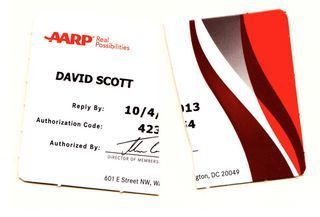 Ever since I turned 50 years old two years ago, I’ve been receiving unsolicited AARP mailings that frequently include membership cards.
Ever since I turned 50 years old two years ago, I’ve been receiving unsolicited AARP mailings that frequently include membership cards.
AARP pisses me off a little because they know the date I was born. They have some list. Yeah, I know that my personal information is all over the place. That’s cool and in many ways I celebrate it by posting personal stuff on social networks. But hitting me up based on my date of birth seems just a little creepy.
AARP pisses me off a little because the old-school interruption based junk mail they send me requires me to use valuable seconds in my day to sort.
AARP pisses me off a little because of the many tons of garbage they create by mailing stuff to Americans who are 50 and over. I open the packages they send so I can throw the stupid membership card into the regular trash and the rest into the recycle bin.
I’m too young!
But AARP pisses me off the most because I’m way to young to join a group called “American Association of Retired Persons.” Yeah, yeah, I know they changed their name to just the AARP acronym, but still. I’m not retired. I hope to work for many decades to come. And I’m not old.
I simply don’t want to be reminded that life marches on and I resent that AARP does that.
I took my daughter to University a few weeks ago. She is starting her third year. It was fun to haul stuff up to her room and laugh a little with her suitemates. I know I am not the same age as her friends, but I feel much closer to a University student than to a retired person.
AARP pisses me off because when I see those stupid envelopes it reminds me of mortality.
Getting old sure beats the alternative. But I’m not old now and won’t be for a long time.
Hey AARP. Can I opt out please? I don’t want to hear from you.
PS. Congratulations to Dianna Nyad completing her epic swim from Cuba to the US. She's 64! "You never are too old to chase your dreams," she said upon exiting the water.
September 14, 2013
United Airlines honors free tickets snapped up in pricing snafu
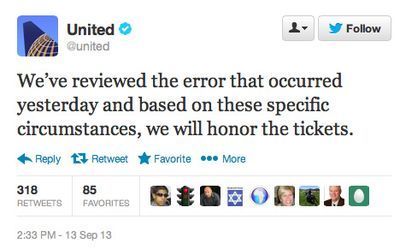 For a short period of time on Thursday, United Airlines Web reservation system was offering up tickets for a price of zero.
For a short period of time on Thursday, United Airlines Web reservation system was offering up tickets for a price of zero.
Consumers paid just a few dollars to cover taxes and fees. News of the windfall pricing quickly spread on social networks and some people reported getting flights from the US mainland to Hawaii for free.
In minutes, United Airlines realized the error and immediately shut down the reservation systems to sort out the mess.
Will they or won’t they?
The big question over the next hours was: “Will United Airlines honor the free tickets?”
I can imagine the meetings taking place at United that day. Based on my experience in such real-time crisis meetings in other industries, here’s my guess about how this would play out in the immediate aftermath:
- The IT people would be on the hook to say if this was a technical glitch and how to fix it.
- The reservation system and site managers would be on the hook to say if this was human error and who is to blame.
- The accountants would say the airline can’t afford to give free tickets away and would argue to void the tickets.
- The lawyers would be pouring through the site’s terms and conditions to figure out how they could weasel out of the mess.
- The marketing and PR people would imagine the potential social media and mainstream media fallout, and would be strongly supporting honoring the tickets.
The answer is yes!
Branding is about the collective opinions of the public and there was a lot riding on this decision. In this case the marketing and PR people won.
Now all those people who got free tickets will be telling all their friends about how United did the right thing by them. Since many of the people who got the tickets learned about it via social networking, we’re talking about a bunch of plugged in consumers spreading the good word.
Smart decisions like this one build goodwill and help to erase lingering negativity from poor decisions in the past like the United Breaks Guitars debacle.
September 11, 2013
Well-played Nokia UK Newsjacking of Apple iPhone announcement
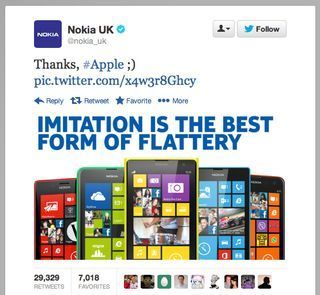 Nokia UK tweeted a fun image during the Apple announcement of the new iPhone offerings yesterday.
Nokia UK tweeted a fun image during the Apple announcement of the new iPhone offerings yesterday.
This is a great example of newsjacking and as of this writing it has been retweeted nearly 30,000 times. Not bad for a small effort from @Nokia_UK, an organization with just 41,000 Twitter followers. This likely took little time and no money.
Newsjacking is the art of injecting your ideas into a breaking news story and generating tons of attention.
When you know the news is coming
Like the now famous Oreo Super Bowl example of newsjacking, this Nokia UK example is one where the company knew that the news was coming.
The Oreo team was prepared for something to happen at the Super Bowl. They weren’t sure what, of course, but their in-house and agency people were ready for action and when they power went out they acted. Fast.
Nokia UK was prepared for the Apple iPhone announcement timing, had their image ready, and then pushed the button at the right time.
While these examples where a company is prepared are certainly interesting, my favorite are those where the news is completely unexpected. Like Newsjacking a naked Prince Harry.
Thanks to Nick Allen for alerting us to this Nokia UK example.
September 10, 2013
How to get a book deal (part two) Summerlandish success
 Two years ago I wrote a post titled How to get a book deal where I outlined my thoughts on how to convince a major publisher to take on your work. The example I used was Summer Land - who I met at one of my talks in Sydney, Australia - and who took my advice and did the hard work required.
Two years ago I wrote a post titled How to get a book deal where I outlined my thoughts on how to convince a major publisher to take on your work. The example I used was Summer Land - who I met at one of my talks in Sydney, Australia - and who took my advice and did the hard work required.
It’s therefore remarkable for me to deliver huge congratulations to Summer on the publication of her book, a memoir, Summerlandish: Do As I Say, Not As I Did exactly two years after my post!
How to get a book deal
Here is a greatly simplified version of the four steps I told Summer as I mentioned in my post two years ago. Summer followed these steps.
(I'm already assuming you can write and are a good storyteller).
1) Unless you are already famous, you must publish yourself first. You need to publish your stuff in a blog or an ebook that you give away.
2) You must build an audience. You need to get your stuff out there and get people interested. Your platform might be through video, blogging, or other ways. This takes a lot of hard work.
3) You must get your fans to help you by creating content that's worthy of being shared.
4) Then you take your success to publishers. Believe me, if you've built an audience of people who love your work and share it and you can show that success, publishers will be eager to work with you and to cut a book deal.
Working with a major publisher is not for everyone
My first hardcover book was self-published. Obviously there are many routes to publish your work and working with a major publisher is not the only way. You can self publish in print or in ebook format, or you can go with a small publisher. I’ve done all of these routes. Clearly there are many ways to get your work into the marketplace.
Summer wanted to go with a major house, so she followed the advice in my post.
Success comes from hard work
“Because I am incredibly impatient and like for things to happen overnight, I didn't want to send the standard query letter and wait,” Summer says. “I took David's advice and decided to release an ebook to drum up a following and hopefully have publishers come to me. I gave it away for free, no email required.”
Summer says that although a lot of people did download her ebook, she didn't gain thousands of Twitter followers or Facebook fans and publishers weren't knocking down her door. “I did however gain a steady readership of my blog and got a call from an agency in LA who were interested in the TV rights to my future book,” she says. “This was amazing, but I didn't want to lose sight of my first goal which was to publish my book.”
In May 2012, Summer attended the Sydney Writers' Festival. “At their event, So You Think You Can Write, I decided to pitch my book to a panel of publishers who were there to provide constructive criticism,” she says. “When I pitched, I didn't just tell what it was about. I explained who would buy it. I also told them about my download numbers, which were a huge appeal. Luckily for me, they said really positive things!”
As soon as the event was over, she was approached by an editor from Hardie Grant. They went through the typical author publisher dance resulting in a contract and a year later the book on the shelves.
Summerlandish
“It was important for me to remember what I ultimately wanted to achieve from my book,” Summer says. “The main goal of my memoir, Summerlandish: Do As I Say, Not As I Did, is to make people laugh and think 'me too!' I share stories from my life that are awkward, embarrassing, outlandish and sometimes mortifying. However, I feel that it’s all relatable. No one escaped childhood and I think we’re all getting over our miserable high school years one glass of wine at a time. If this book can make someone laugh while on vacation or on their morning commute, I’ll be forever happy. I think by saying the things that people are afraid to talk about, we all feel better about ourselves."
One of the most rewarding things about what I do for a living is, in a small way, to help people achieve their dreams. All I do is provide an idea, or a spark, or a little motivation to those who read my books, my blog, my free ebooks, or hear me speak. Then those people do the hard work required to market their business or their idea. Whenever I learn that someone has achieved success as a result of something I suggested, it makes my day (or my week).
It’s great that Summer attended one of my talks in Sydney, Australia a few years ago. Its terrific that she approached me to get some ideas on how to get her book in front of publishers. But more than most people, Summer actually took the advice and made a success. She did the hard work.
Thanks, Summer, for sending me a copy of Summerlandish. I enjoyed it very much. The opening story is hysterical even the third time I read it. My wife kept wondering why I was giggling as I was reading.
September 5, 2013
Why Istanbul will win the 2020 Summer Olympic Games
As I write this, in just two days - September 7, 2013 - the International Olympic Committee will elect the 2020 Summer Olympic Games host city at the 125th IOC Session in Buenos Aires, Argentina. The three candidate cities are Istanbul, Turkey, Madrid, Spain, and Tokyo, Japan.
I predict that Istanbul will be chosen to host the 2020 Summer Olympic Games.
I’ve been to both Madrid and Istanbul multiple times and I lived in Tokyo for seven years, so I know the cities. Each would be a fine host city and no matter which city wins, there will be excellent Games.
I’m basing my prediction solely on the English language websites of the Olympic bids. Sure, there are many other factors the IOC considers to choose a host city and my little analysis does not consider any of them. I’m simply looking at marketing and PR as expressed via the host city candidate sites.
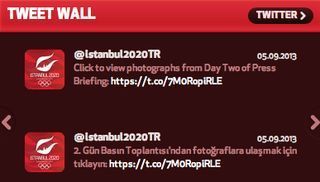 Istanbul 2020 is an excellent site for which I give a grade of B+
Istanbul 2020 is an excellent site for which I give a grade of B+
I love the real time aspects of the Istanbul 2020 site. There’s a widget bringing up recent Facebook and Twitter posts. The Istanbul 2020 Facebook page seems well done and engaging.
There’s a real-time news feed which is also cool.
I love the many original photos, which showcase both Turkey’s Olympic officials as well as athletes.
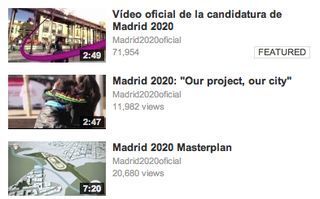 Madrid 2020 is a good site and I give it a B-
Madrid 2020 is a good site and I give it a B-
Actually Madrid and Istanbul are so close that I had a tough time choosing which I liked best. Both are engaging and colorful and it is easy to figure out where to go for the information you want.
The Madrid 2020 site has a nice focus on video with embeds from the Madrid YouTube channel. Videos are in multiple languages including this one I like Madrid 2020, Ready to Shine.
And then we have Tokyo 2020, a D-
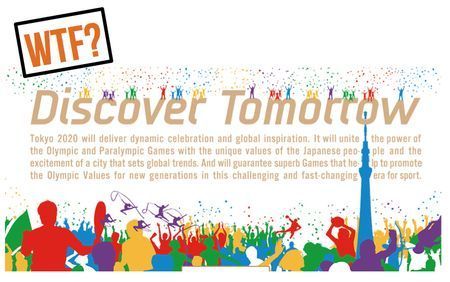 Back in April, I called the English language version of the Tokyo 2020 site, the World's worst website in a blog post. In the months since, a few minor improvements have been made to the site. In my opinion, it’s still terrible though.
Back in April, I called the English language version of the Tokyo 2020 site, the World's worst website in a blog post. In the months since, a few minor improvements have been made to the site. In my opinion, it’s still terrible though.
When I go to this site to look for information, it assaults me with a crazy popup message about “vision.” These sorts of popups are so freaking annoying! It is so difficult to override the popup that I fear most people won’t bother.
This site is so filled with Gobbledygook language like “rock-solid,” “innovation”, “world-class,” and other words that just don’t have any meaning.
You can read some of the other reasons I dislike the Tokyo site here.
Saving for posterity
I’ve gone to each of the three sites and taken a screen shot of what pops up when you first get to the site as of today. Because the host city will be announced in just 48 hours and the sites are likely to be updated (and two are likely to be taken down at some point), I wanted to capture what’s there.


